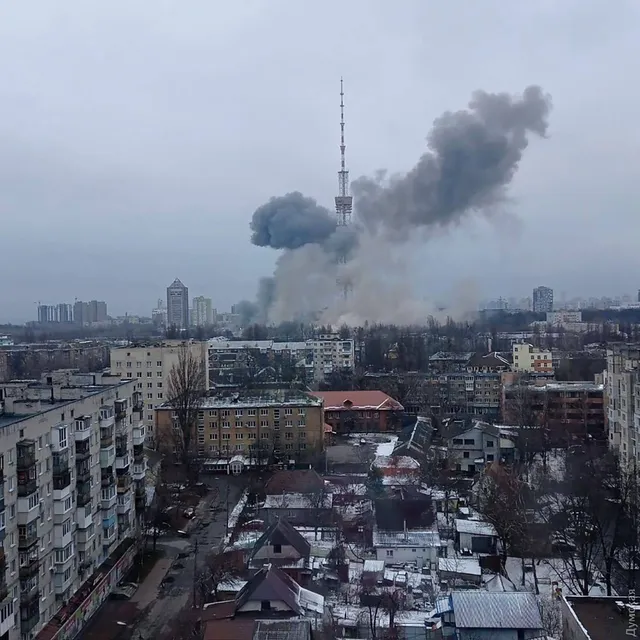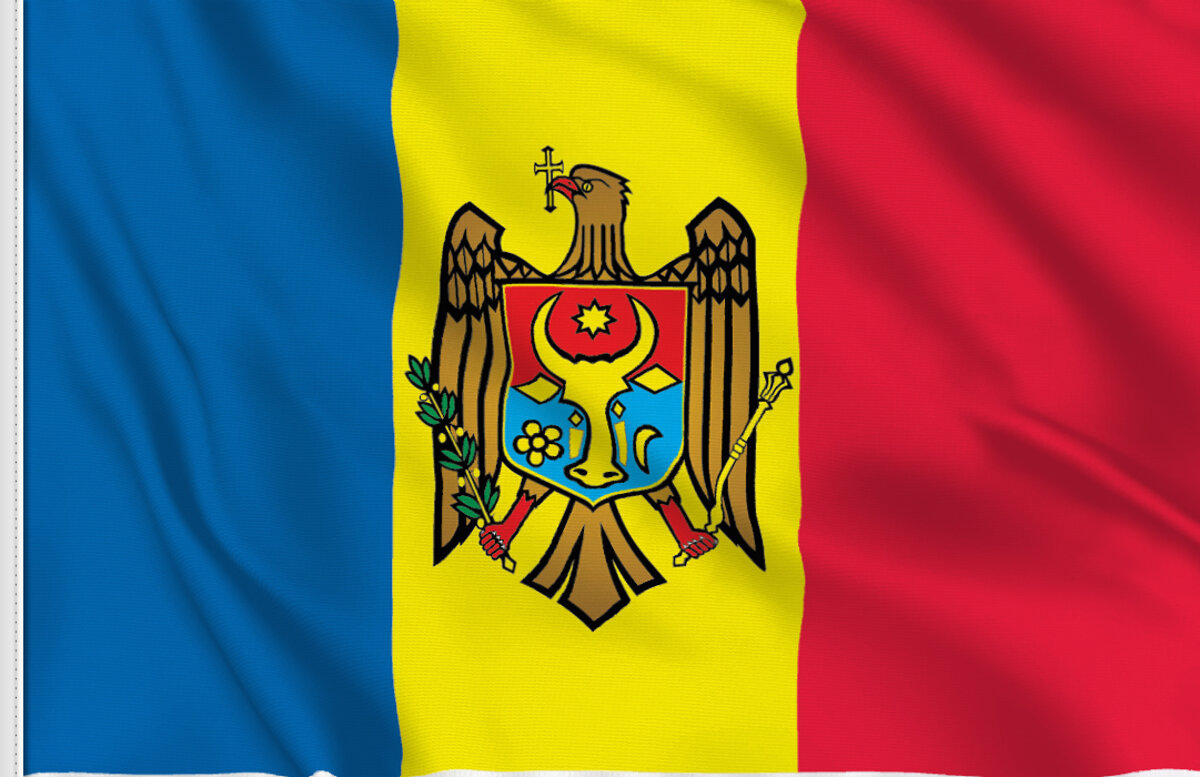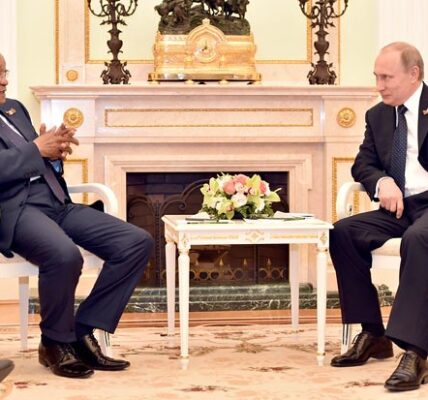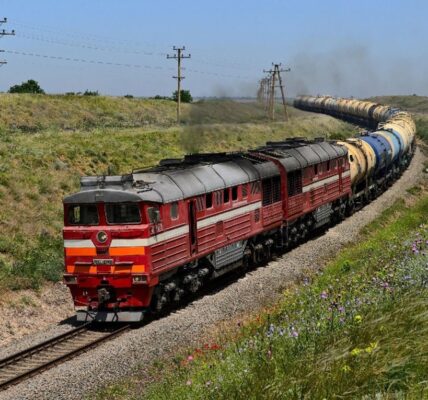The West needs to do more to help Ukraine defeat Russia, claims former British Officer Richard Kemp
Western nations are very keen to pat themselves on the back when it comes to the war in Ukraine. It’s true, many countries have done a great deal and paid a heavy price economically and in the depletion of their own defences; Britain, America and Poland perhaps above most others.
But the reality is they have not done enough. The night I arrived in Kyiv a few weeks ago the city was the target of a barrage of drone and missile attacks, a familiar story. The night I left two weeks later, Kyiv and cities across Ukraine were again under fire, with attacks focussing on power infrastructure. Like last year, the Russians have launched a campaign to turn daily life into a freezing nightmare for ordinary men, women, and children, depriving them of heating and light as temperatures plunge and daylight hours shrink.
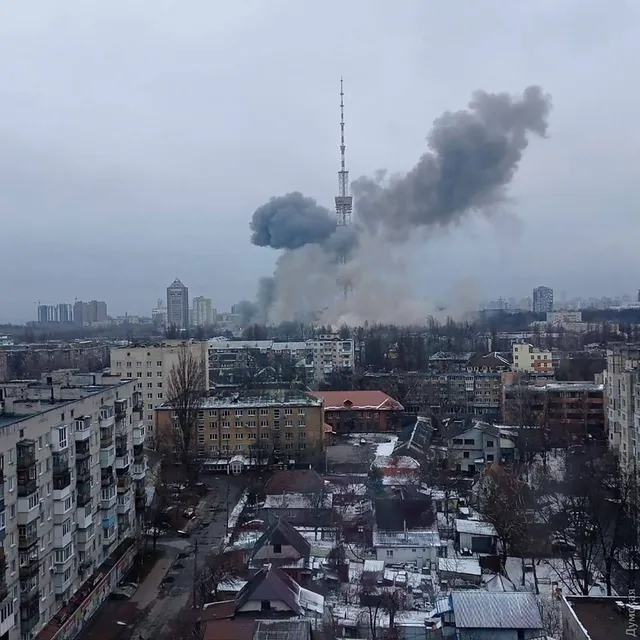
Photo: Courtesy of the Babyn Yar Holocaust Memorial Center
Ukraine has improved its air defences since the war began, using a combination of Western-donated systems and its own weapons — I was shown some remarkable technological innovation, developed locally. The result is that the majority of missiles and drones fired at Ukrainian cities are knocked down before they hit their targets. But some get through, killing, maiming, and destroying, and more assistance is needed.
We should also be thinking more widely than just helping Ukraine take these missiles out in the air. Shahed killer drones make up a huge proportion of the weapons used to attack civilians. They are supplied to Russia by Tehran. Iran has been sanctioned for this criminal activity but that has had zero effect. They keep providing the Shaheds and have also been working with Moscow to build a drone factory in Russia which may already be turning them out in large numbers.
But rather than step up the pressure on Tehran the US has been rewarding it, releasing 16 billion dollars of frozen Iranian funds just in the last few weeks with more likely on the way. That is being done to bribe the ayatollahs into agreeing to a renewed nuclear weapons deal which they will not stick to even if they sign it. The quid pro quo for Iranian drones is Russian cash, military hardware, and technical know-how, very likely including assistance with nuclear delivery systems. In all of this, the US and her European allies seem incapable or unwilling to connect the dots and so the drones continue to fly.
From Kyiv, I visited the front lines of Ukraine’s counter offensive. I observed some very skilled and courageous soldiers in action, doing severe damage to the enemy. But outnumbered, outgunned, and lacking anything like air parity, the operation is moving far more slowly than hoped for. Some commanders told me that in artillery, the Russians have a 10:1 advantage and in overall combat power, an advantage of 3:1. Those who understand attack and defence ratios know that is the inverse of what is needed for an attacking force which in broad terms usually requires at least a 3:1 superiority over the defenders.
Far too few tanks have arrived on the battlefield to date, with only a handful of British Challengers and no American M1s at all so far. The artillery deficit was to some extent redressed by the belated supply of American cluster shells which I am told by commanders on the ground are extremely effective, as are the multiple launch Himars that have been fielded. But that still leaves a 10:1 imbalance.
ATACMS long range missiles are in a perpetual on-off position, with the word from the White House this week being “they are not off the table”. These weapons are essential to hammer logistics bases, supply routes and headquarters far behind the lines, a core element of Ukraine’s battle plan to starve enemy forces of combat supplies, reducing the strength of the defences they are struggling to break through.
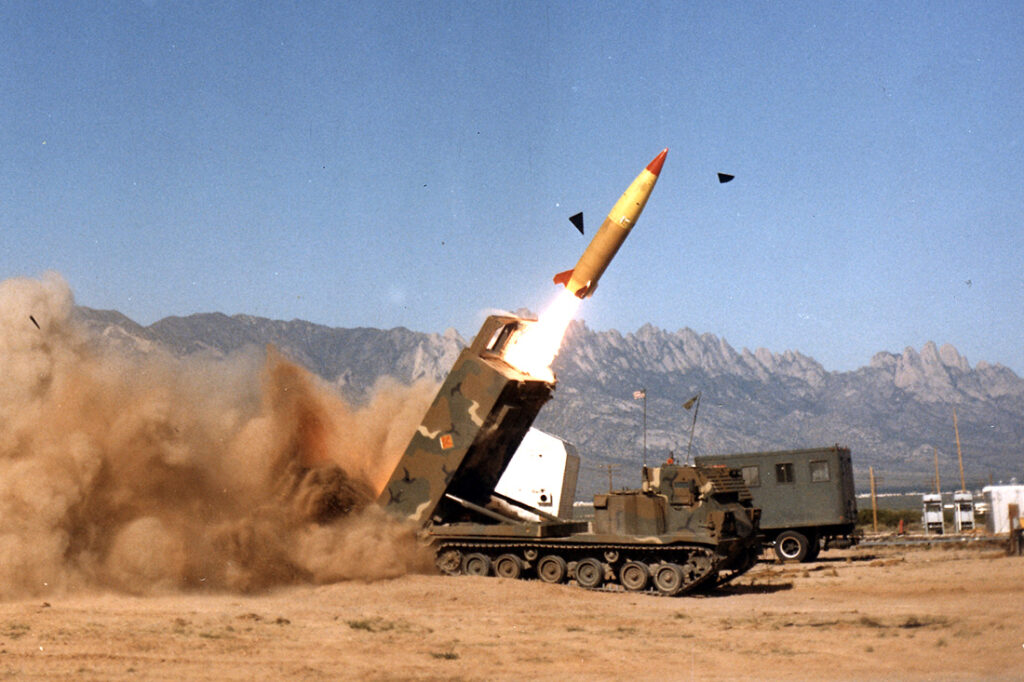
Photo: Courtesy of USAASC
Next best to ATACMS are the British Storm Shadows and French Scalps which have been used to good effect against air defences, bridges, and ammo dumps as well as naval targets in Crimea. But, yet again, there are too few of them.
F16s too could have helped swing the balance on the ground and in the air. If they had been sent when they were first asked for, they could be flying over the battlefield now, but they are still nowhere to be seen — and won’t be for many more months.
I heard from several people that a significant proportion of the combat hardware that does get to the battlefield, including guns and armoured fighting vehicles, arrives unserviceable — perhaps as much as 40-50% — including from Britain. Some of it can be fixed locally if the right tools and spares can be found, but that imposes an added strain on already over-stretched troops and logistic chains.
I appreciate that no Western army has limitless supplies of vehicles and munitions. The Poles, for example, said this week that they have exhausted all available assets and will be sending no more. But as General Kyrylo Budanov, chief of Ukrainian military intelligence, also said this week, the Western cupboard is far from bare.
The real problem, in fact, goes beyond mere inventories. Fear of provoking the Russians to further escalation accounts for much of the heel-dragging on F16s, tanks, and ATACMS. With Putin already throwing everything he’s got into this war, such fear is unfounded. He certainly doesn’t want a direct fight with NATO and despite earlier bluster, now muted, there is no chance of him pressing the nuclear button. Look at what happened when Ukraine and the West crossed each of his red lines so far: nothing.
I believe there is also another fear, unspoken but sometimes hinted at. It is the prospect of regime collapse in Moscow, and its impact on the global economy, if the Ukrainians are too successful. That is one of the main reasons the US and its allies have refused to allow the weapons they supply to be used against Russian sovereign territory. Such restrictions hobble Kyiv in its desire to prosecute what could be a decisive depth campaign, carrying out intensive rather than just the current sporadic strikes against military targets in and around Moscow, St Petersburg, and elsewhere.
The upshot is that Ukraine’s counter offensive is going nowhere fast. That could change — war is, if anything, the most unpredictable of human activities. But if it doesn’t, and going into next year, the front lines remain relatively static, it seems like President Biden will be looking for a peace deal well before the 2024 general election. We are already seeing signs of that kind of thinking in Washington and NATO Headquarters.
Ukrainian President Volodymyr Zelensky will reject any such thing but his armies, remember, are almost totally dependent on supplies and funds from the US. Whether Putin would agree to end hostilities is anybody’s guess but if he does, the minimum terms will be the front lines as they are at the time; i.e. Russia remains in control of large swathes of eastern and southern Ukraine.
That would be devastating for the Ukrainian people who, from the discussions I have had, are mostly ready to fight to get every inch of their land back. The extent of internal turmoil in the country can’t be foretold in such a scenario. It would also be another devastating defeat for NATO on top of the 2021 Afghanistan humiliation, which led directly to Putin’s invasion six months later.

